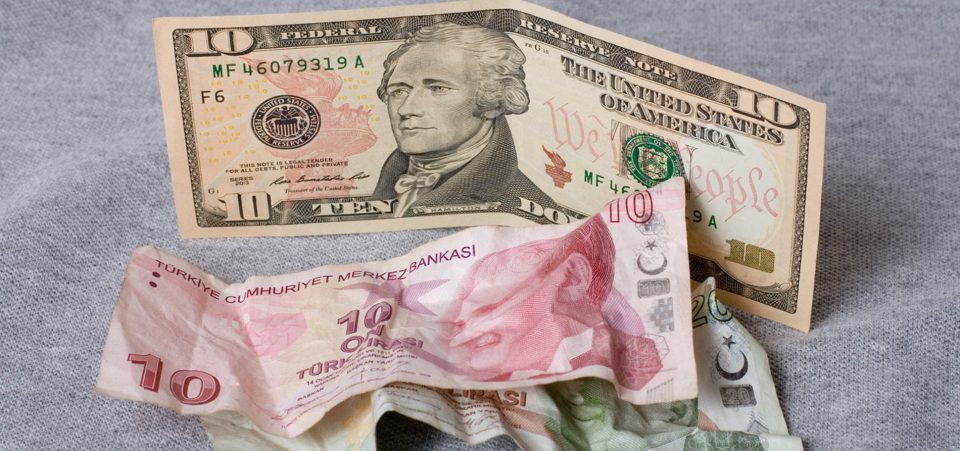USD to TRY Could Hit Record in 2017: Turkish Lira Faces Risk of Stagflation
The USD to TRY keeps setting new records. Record lows, that is. The Turkish lira also continues to weaken in this first week of 2017, continuing the trend of 2016. On Thursday, it hit 3.64, which is remarkable because most emerging markets’ currencies were gaining against the dollar.
But, unlike other currencies, the Turkish lira has lost ground against all major denominations. That makes the TRY the “falling knife” currency of the moment. The USD to TRY will likely continue to move in favor of the dollar.
The Turkish lira lost 20% of its value against the Greenback in 2016. It could drop by a bigger percentage in 2017 because, as noted below, Turkey risks stagflation.
The Turkish lira dropped but the Mexican peso and Chinese yuan were gaining after weeks of losses against the dollar. Even the Canadian dollar reversed its bearish trend versus the Greenback. The U.S. Federal Reserve minutes released on January 4 revealed lingering uncertainties about how the U.S. economy would perform under President Donald Trump.
However, the yuan and peso could move back into bearish mode. They achieved their recent gains thanks to central bankers’ interventions. Rather, the TRY reflects several economic and political uncertainties affecting Turkey itself. The USD to TRY could reach successive highs in 2017. Turkey’s problems don’t have quick or easy solutions.
Dark Geopolitical and Economic Clouds Could Trigger Stagflation in Turkey
There are darker clouds hanging over Turkey in the foreseeable future. It faces a snowballing political crisis in the wake of what appears to be a wrap up of the Syrian civil war. 2017 started out with a terrorist attack that left 39 people dead at a popular Istanbul night club.
On January 5, there was another attack. This time a car bomb exploded in front of a courthouse in Izmir/Smyrna. The first week of 2017 suggests it could be an even more tormented year than 2016 was. The country is still reeling from an attempted coup last July against President Recep Tayyip Erdoğan himself.
The reaction, marked by a purge of the army, security, bureaucracy, and academic establishment, has left Turkey more vulnerable. Numerous terrorist attacks, attributed to Islamic State (ISIS) or Kurdish separatists like the PKK, have certainly weakened Turkey from a geopolitical risk perspective.
They have also weakened Turkey’s economy. The Turkish currency will continue to suffer blows. Moreover, like China, the TRY has weakened because Turks have found the higher U.S interest rate attractive. Capital flight has, predictably, become a major problem.
Then there’s the issue of oil prices. They are between five percent and 10% higher than they were for most of 2016. Turkey is a net importer of oil. It benefited from the resource’s lower costs in 2015-2016. But, oil’s bullish reversal after the OPEC and non-OPEC producers agreed to production cuts can only accelerate overall energy costs and inflation.
These factors could then add to an already dense litany of weaknesses, typical of emerging markets. If the Fed, despite the apparent uncertainty from the minutes, applies the three programmed rate increases over the course of 2017, capital flight will intensify.
Meanwhile, also in the face of the negative sentiment provoked by monthly—if not weekly—terror attacks, President Erdoğan will try to push an economic growth policy. This implies the Turkish National Central Bank will be under pressure to cut its rates further. In other words, the Turkish lira is under a double whammy inflation onslaught. Turkey risks that dreaded word: stagflation.






